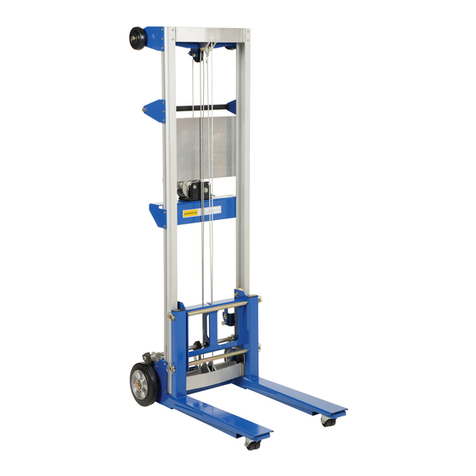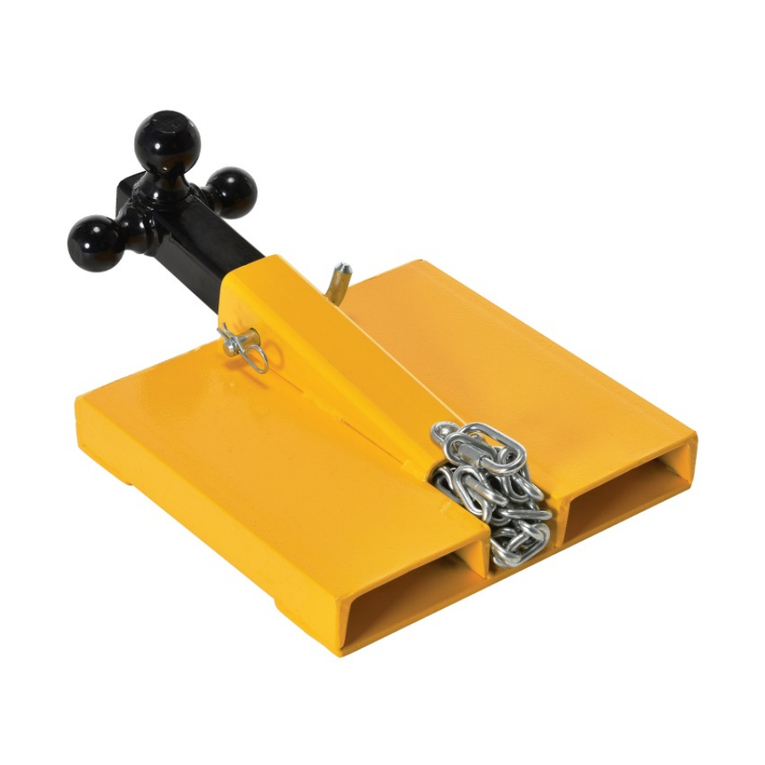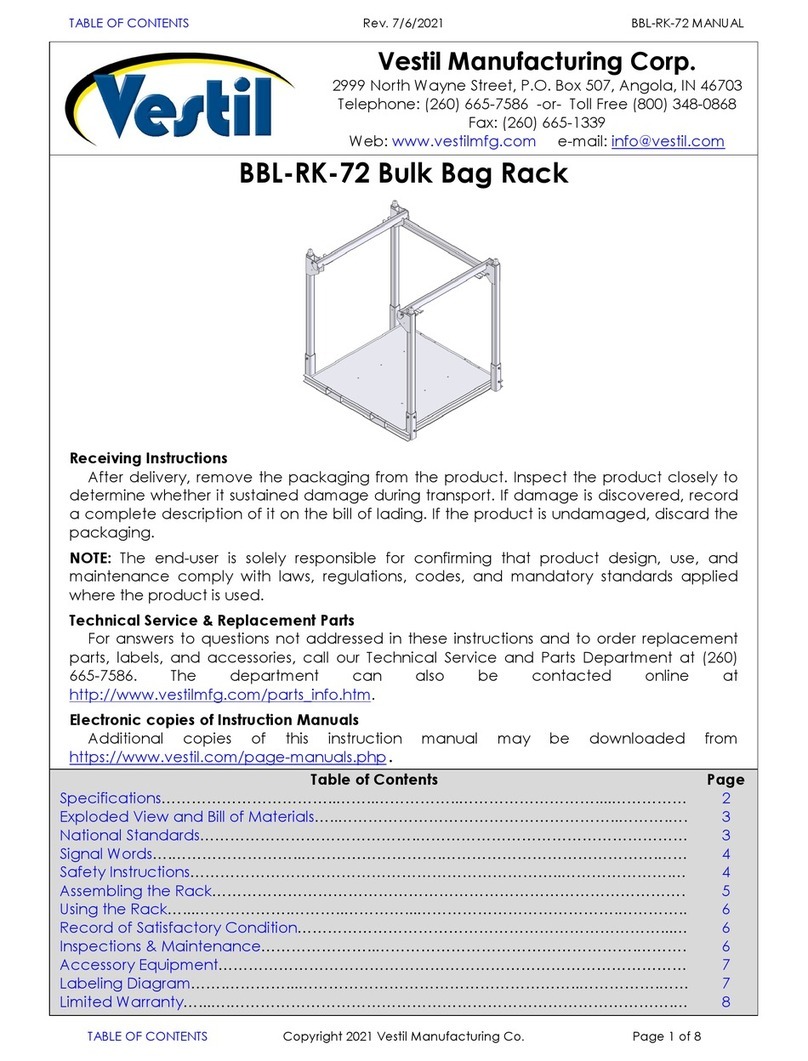Vestil HDD Series User manual
Other Vestil Lifting System manuals

Vestil
Vestil RR Series User manual
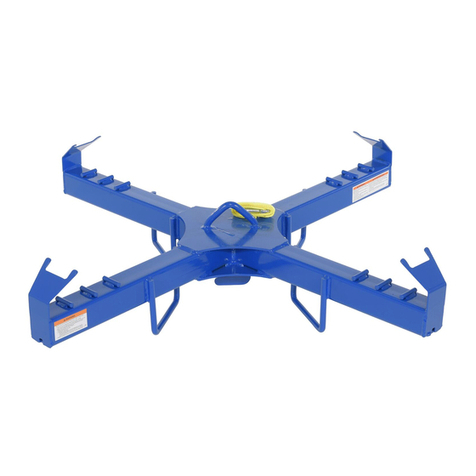
Vestil
Vestil BBL-4 User manual
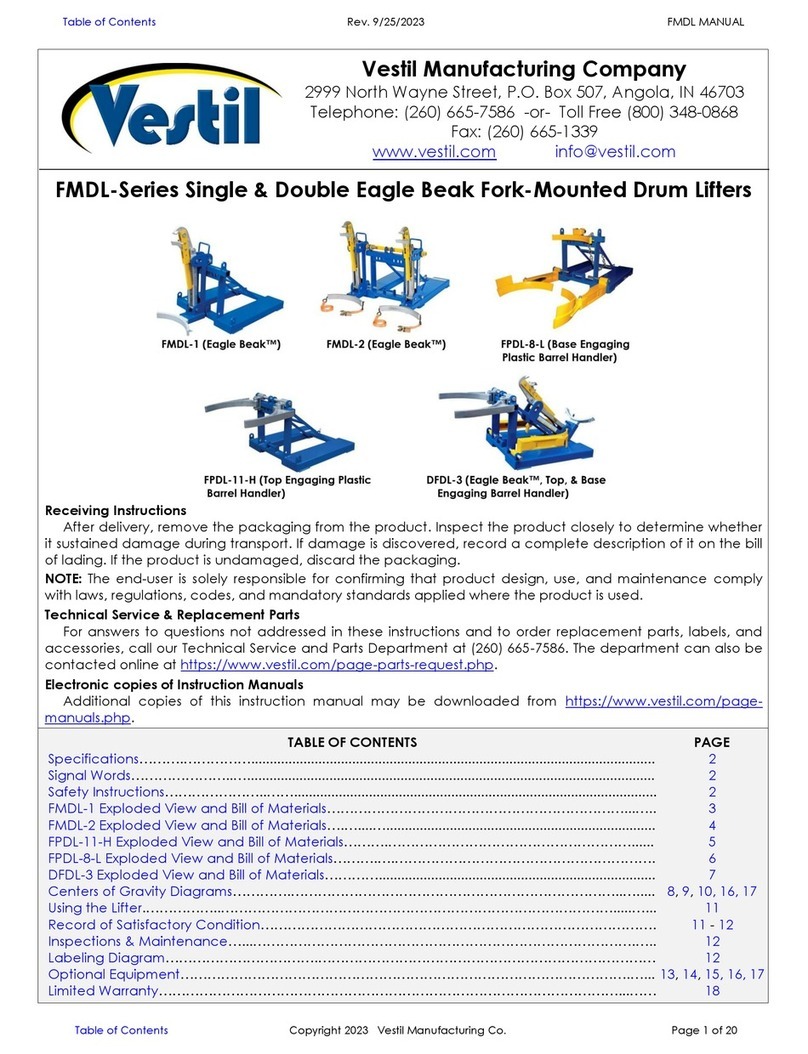
Vestil
Vestil FMDL Series User manual

Vestil
Vestil SLNM Series User manual
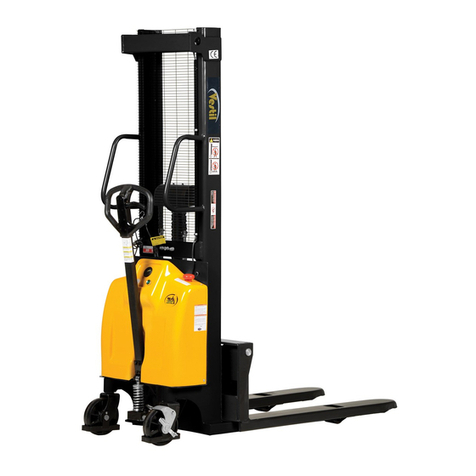
Vestil
Vestil SE/HP Series User manual
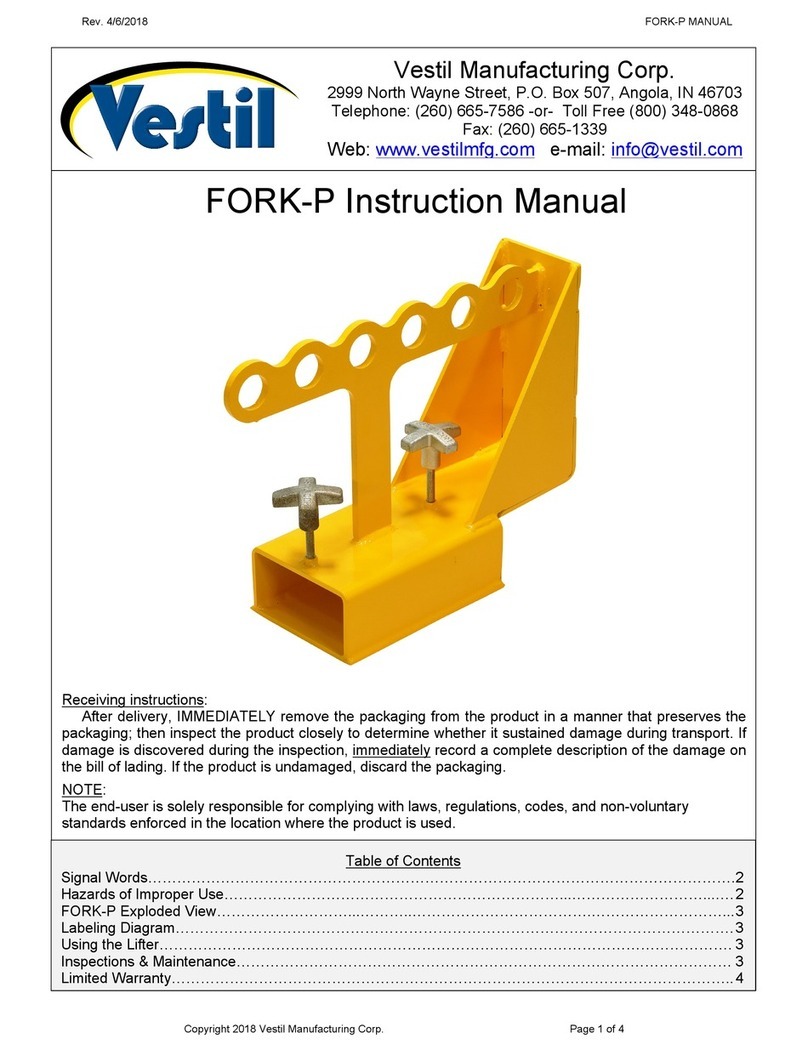
Vestil
Vestil FORK-P User manual

Vestil
Vestil FM-0648 User manual
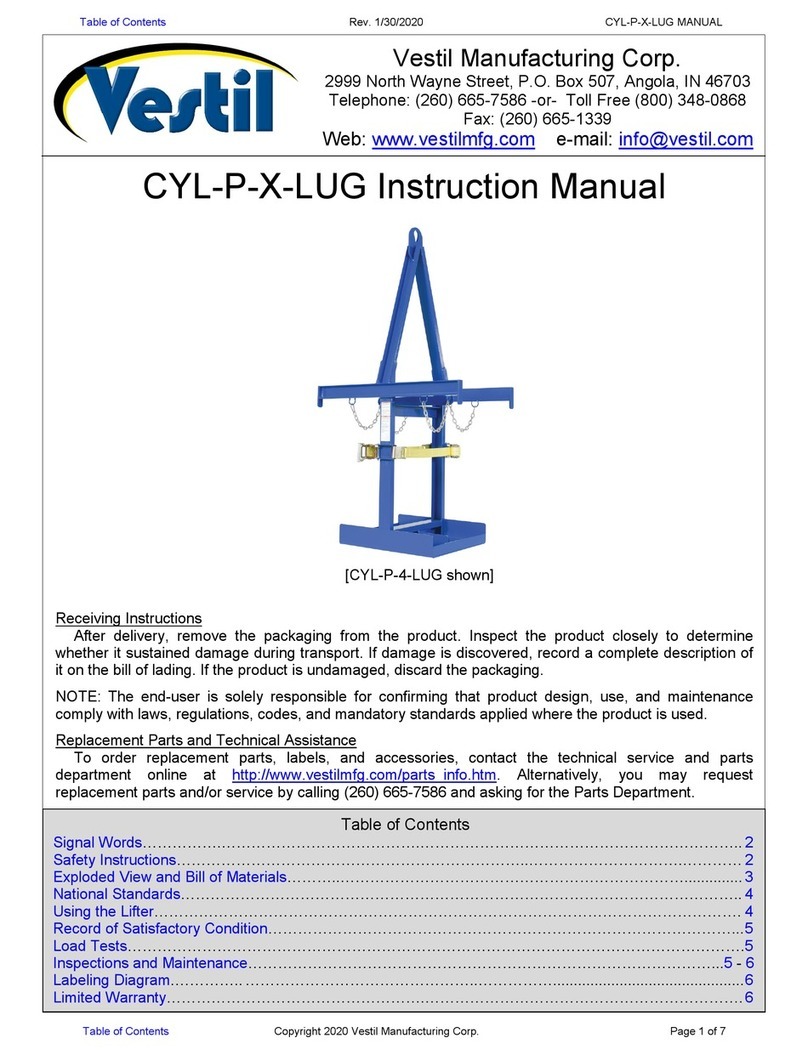
Vestil
Vestil CYL-P-LUG Series User manual

Vestil
Vestil MRR Series User manual
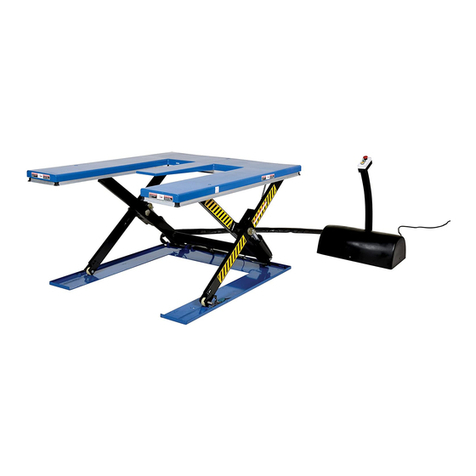
Vestil
Vestil EHE-2 User manual

Vestil
Vestil HLD Series User manual

Vestil
Vestil WP Series User manual

Vestil
Vestil OLF-4-42 User manual

Vestil
Vestil FLB-D Series User manual

Vestil
Vestil MH-V10 User manual
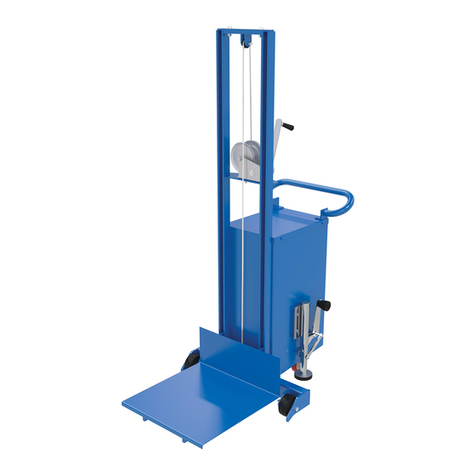
Vestil
Vestil LLCB-202058 User manual

Vestil
Vestil CYL-D-1-PN User manual
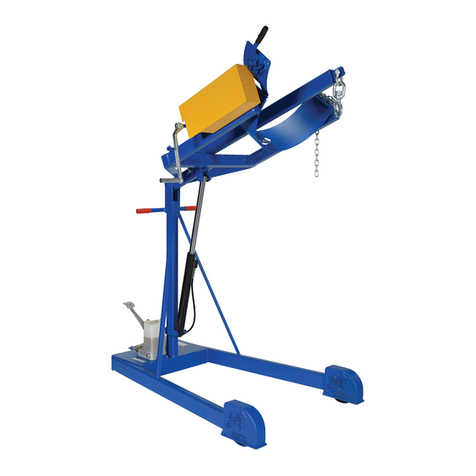
Vestil
Vestil HDC-305-60 User manual

Vestil
Vestil FRA-4-238 User manual

Vestil
Vestil CYL-HLT Series User manual
Popular Lifting System manuals by other brands

morse
morse 82H-124 Operator's manual

Braun
Braun NL955 Series Operator's manual

haacon
haacon 1889.10 quick start guide

Protekt
Protekt AT 252 instruction manual

R. Beck Maschinenbau
R. Beck Maschinenbau HS 600 operating manual

Nova Technology International, LLC
Nova Technology International, LLC NAS Series quick start guide

Genie
Genie Z-60/34 Operator's manual

Screen Technics
Screen Technics INTERFIT Vertical Up Lift instructions

Mortuary Lift
Mortuary Lift ULTIMATE 1000 instructions

Custom Equipment
Custom Equipment Hy-Brid 3 Series MAINTENANCE & TROUBLESHOOTING MANUAL

Custom Equipment
Custom Equipment Hy-Brid Lifts 2 Series Maintenance and troubleshooting manual

Hy-Brid Lifts
Hy-Brid Lifts HB-P3.6 MAINTENANCE & TROUBLESHOOTING MANUAL

BERG
BERG BeNomic EasyLeaf Technical manual

Powermate
Powermate LiftGate LG-3 Installation & operation manual

Snorkel
Snorkel TM12 Series Operator's manual

Terberg
Terberg OMNIDEKA Translation of the original instructions

Harmar Mobility
Harmar Mobility AL625 Installation & owner's manual

Rotary
Rotary SPO16 installation instructions
